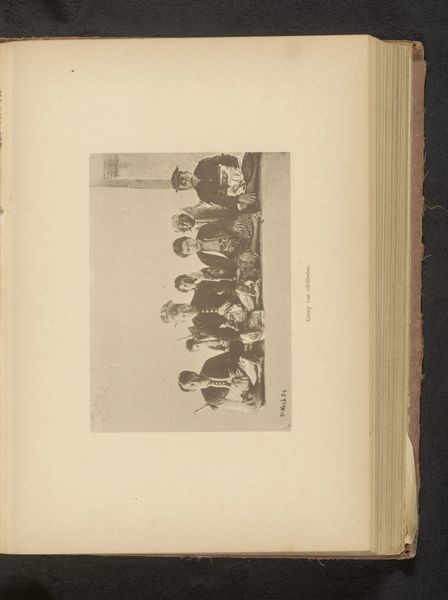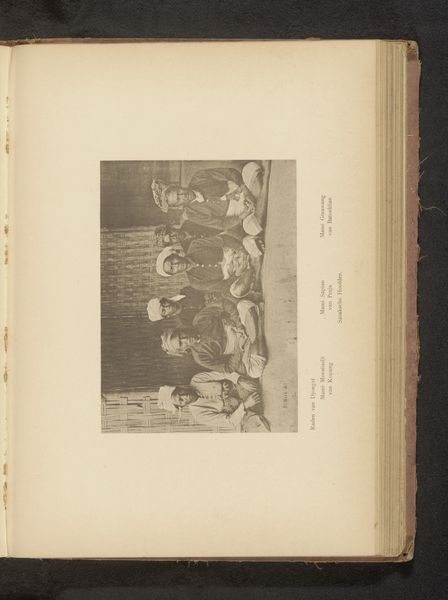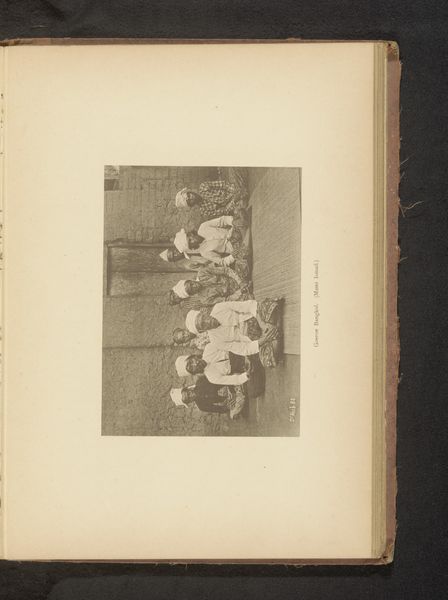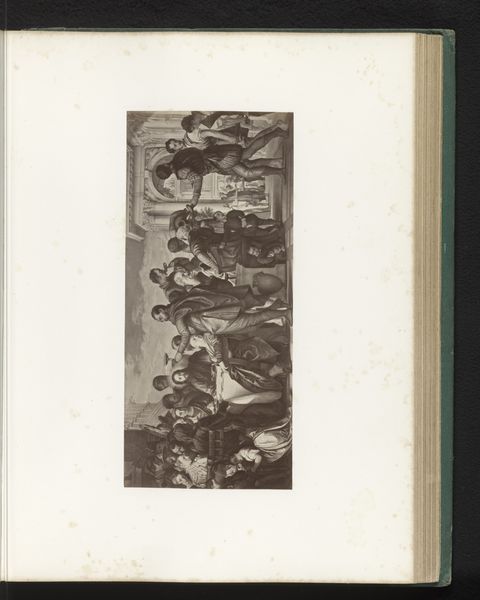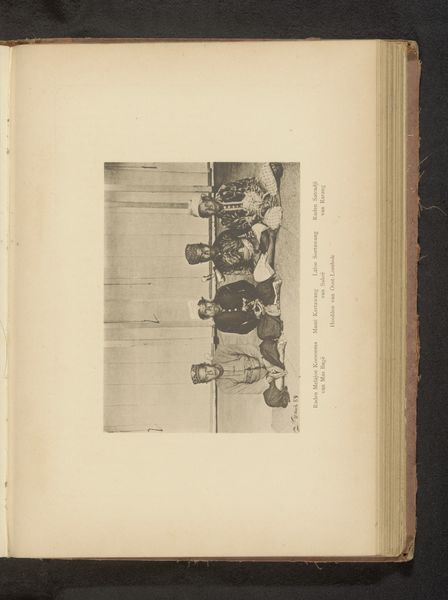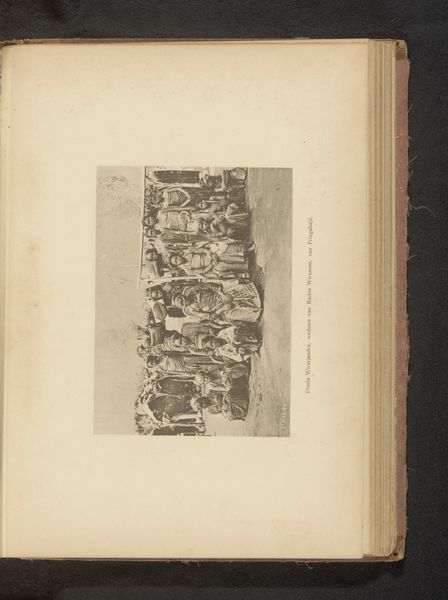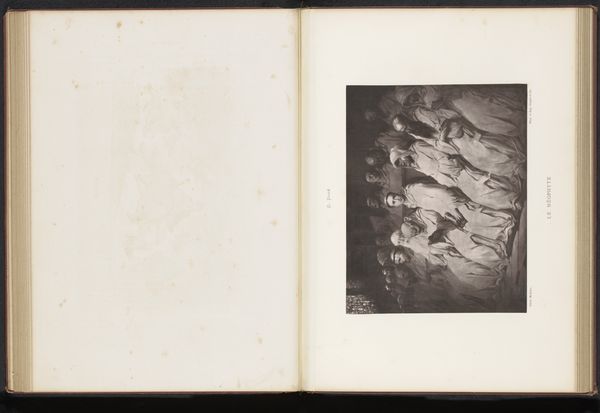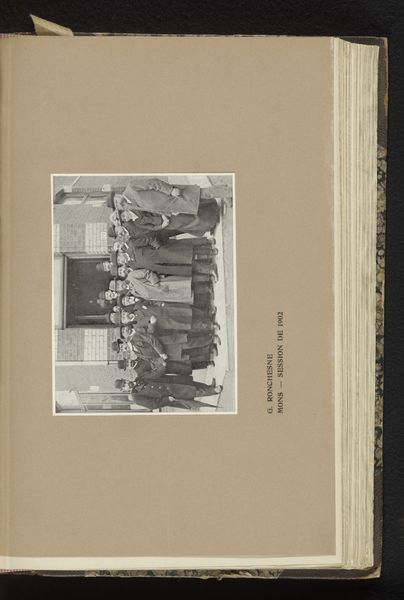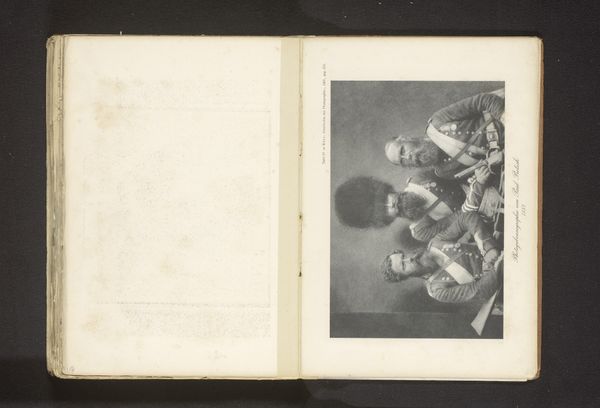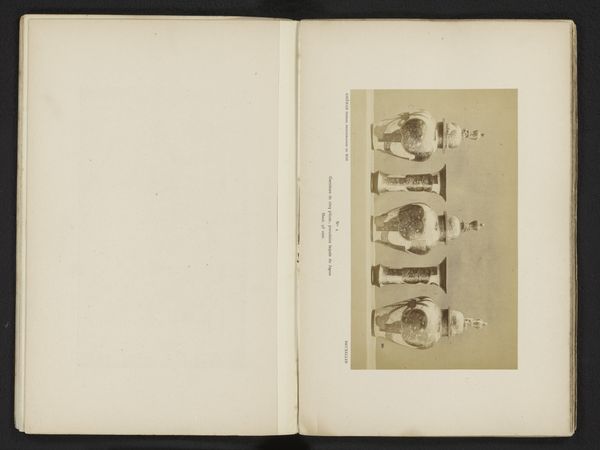
photography, gelatin-silver-print
#
photography
#
orientalism
#
gelatin-silver-print
#
genre-painting
Dimensions: height 121 mm, width 166 mm
Copyright: Rijks Museum: Open Domain
Curator: Let’s delve into this intriguing gelatin silver print, "Groepsportret van onbekende vrouwen" – a group portrait of unknown women taken before 1897 by Christiaan Johan Neeb. Editor: My immediate reaction is a sense of quiet dignity emanating from these figures. The sepia tones contribute a certain gravitas. It is presented in an antiquated book with a rough aesthetic to it, making it more accessible. Curator: Absolutely. Viewing it through a lens attuned to the colonial gaze is essential. These women are deliberately staged within the context of colonial genre painting, an extension of orientalist discourse. Their anonymity and the picture's focus on them as an ethnic "type" needs unpacking. How did the materials and modes of production affect that colonial depiction? Editor: Indeed. The photograph itself, as a mass-reproducible medium, allows for widespread dissemination of these images and associated power dynamics. But consider too, the practical element, like access to chemicals or equipment; How are global power dynamics ingrained within such photographs? Curator: Precisely. The colonial powers often controlled access to photography, solidifying their narrative dominance. This image normalizes racial and gender hierarchies, positioning these women within a frame crafted for European consumption, feeding ideas around ethnicity at the time. What happens if we focus not only on intent but also audience and their use of the art? Editor: Good point. Consider the labour involved, too. Did these women get paid? What sort of production processes were in place for them and was this considered in that part of the world? The socio-economic system plays a huge role here too. Curator: That's where critical perspectives meet materiality. Recognizing the exploited labor that often went into crafting these visual representations allows us to engage in conversations about power dynamics, representation, and the ongoing consequences of colonial legacies. Editor: Definitely, I will be pondering this a bit longer, I’d suggest viewers at home do too. Curator: Agreed; thinking about the broader framework enriches how we confront images like this today.
Comments
No comments
Be the first to comment and join the conversation on the ultimate creative platform.
